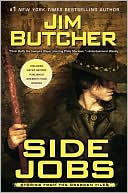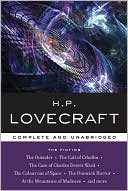How to Escape from a Leper Colony
An enthralling debut collection from a singular Caribbean voice\ For a leper, many things are impossible, and many other things are easily done. Babalao Chuck said he could fly to the other side of the island and peek at the nuns bathing. And when a man with no hands claims that he can fly, you listen.\ The inhabitants of an island walk into the sea. A man passes a jail cell’s window, shouldering a wooden cross. And in the international shop of coffins, a story repeats itself, pointing toward...
Search in google:
An enthralling debut collection from a singular Caribbean voiceFor a leper, many things are impossible, and many other things are easily done. Babalao Chuck said he could fly to the other side of the island and peek at the nuns bathing. And when a man with no hands claims that he can fly, you listen. The inhabitants of an island walk into the sea. A man passes a jail cell’s window, shouldering a wooden cross. And in the international shop of coffins, a story repeats itself, pointing toward an inevitable tragedy. If the facts of these stories are sometimes fantastical, the situations they describe are complex and all too real.Lyrical, lush, and haunting, the prose shimmers in this nuanced debut, set mostly in the U.S. Virgin Islands. Part oral history, part postcolonial narrative, How to Escape from a Leper Colony is ultimately a loving portrait of a wholly unique place. Like Gabriel García Márquez, Edwidge Danticat, and Maryse Condé before her, Tiphanie Yanique has crafted a book that is heartbreaking, hilarious, magical, and mesmerizing. An unforgettable collection.The Barnes & Noble ReviewFrom Paul Di Filippo's "SMALL PRESS SPOTLIGHT" column on Barnes & Noble ReviewIn the realm of the small presses, thirty-six years amounts to a geological era. To survive and flourish for nearly four decades is a proud accomplishment that is denied all but a few firms. Examples of contemporary indie publishers still vibrant at the outer edge of small press longevity include City Lights (founded 1953), Burning Deck (founded 1961), and Fiction Collective/FC2 (founded 1973). Just a tad younger than the youngest in that list comes Graywolf Press, established in 1974 by Scott Walker.A non-profit since the middle of the nineteen-eighties, Graywolf has made its sterling reputation in the realm of fiction, poetry, memoirs and literary criticism. Their available backlist constitutes nearly three hundred titles spread across a wide range of styles and themes, and they regularly issue upwards of twenty new books per year. Partnered in various ventures with the College of Saint Benedict, enjoying a solid base in the nation's three-wolf-moon heartland of Minnesota, Graywolf has proven that quality endures.Lightly salted with the lilting native patois of the Caribbean -- specifically, the Virgin Islands of the author's birth -- the stories in Tiphanie Yanique's How to Escape from a Leper Colonyare elegant, quiet and sly meditations on love, status, race and family. Most are naturalistic. In "The Saving Work," two young islanders attending college in the USA deal with homesickness and first love. "Street Man" renders the inner life of a petty thug who possesses surprising depths of feelings. "Kill the Rabbits" is a triptych of three disparate livesintersecting during Carnival time. But here and there in this volume arise occasional eruptions of the macabre and surreal. "Canoe Sickness" details a bizarre psychic malady akin to that suffered by John Barth's weatherless Jacob Horner. And in the title piece, events at a refuge for lepers spiral into occult madness. Yanique establishes herself as a soul sister to writers such as Nalo Hopkinson and Tananarive Due.
How to Escape from a Leper Colony 1The Bridge Stories 15Street Man 31The Saving Work 41Canoe Sickness 61Where Tourists Don't Go 73The International Shop of Coffins 85Kill the Rabbits 143
\ Publishers WeeklyThe effects of colonialism throb in Yanique’s vivid debut collection. The chilling title story is set in 1939, when the Trinidadian island of Chacachacare was still used as a leper colony; the narrator, a 14-year-old orphan with leprosy, befriends a curious boy her age, Lazaro, whose mother was murdered there when he was a baby, and whose troubled relationship with the nuns leads him to a terrible retribution. “The Bridge Stories” are elucidating snapshots of islanders struggling to carve out lives for themselves on St. Thomas and elsewhere amid an exploitative tourist economy. Yanique frequently dips into rich, fanciful vernacular, such as in “Street Man,” a beautiful, sad glimpse at a doomed love affair between a college student and a St. Croix local. In the affecting novella, “International Shop of Coffins,” Yanique depicts characters of mixed African/Creole/Indian descent torn between the white and island worlds in all their complexity and conflictedness. A smattering of dark humor leavens the tense narratives as Yanique penetrates the perils and pleasures of lives lived outside resort walls. (Mar.)\ \ \ \ \ Library JournalAnyone who has ever been an outcast will recognize himself or herself in these short stories by Yanique (creative writing & Caribbean literature, Drew Univ.), which center mostly on the island of St. Thomas. The heartache of each character is vivid, but what is a real triumph here is the simple, eloquent prose, which doesn't work too hard to achieve its purpose. While the title story is the best, others are still excellent, and they all describe people who are struggling between two worlds—not just the case of being marginalized by race, culture, or religion but the simple feeling of always being an outsider. Yanique portrays this position well, over and over, throughout the book. VERDICT A beautiful and insightful read, this will be of interest not only to academic libraries but also to all drawn to the best contemporary American and Caribbean fiction.—Shalini Miskelly, Highline Community Coll. Lib., Des Moines, WA\ \ \ The Barnes & Noble ReviewFrom Paul Di Filippo's "SMALL PRESS SPOTLIGHT" column on Barnes & Noble Review\ In the realm of the small presses, thirty-six years amounts to a geological era. To survive and flourish for nearly four decades is a proud accomplishment that is denied all but a few firms. Examples of contemporary indie publishers still vibrant at the outer edge of small press longevity include City Lights (founded 1953), Burning Deck (founded 1961), and Fiction Collective/FC2 (founded 1973). Just a tad younger than the youngest in that list comes Graywolf Press, established in 1974 by Scott Walker.\ A non-profit since the middle of the nineteen-eighties, Graywolf has made its sterling reputation in the realm of fiction, poetry, memoirs and literary criticism. Their available backlist constitutes nearly three hundred titles spread across a wide range of styles and themes, and they regularly issue upwards of twenty new books per year. Partnered in various ventures with the College of Saint Benedict, enjoying a solid base in the nation's three-wolf-moon heartland of Minnesota, Graywolf has proven that quality endures.\ Lightly salted with the lilting native patois of the Caribbean -- specifically, the Virgin Islands of the author's birth -- the stories in Tiphanie Yanique's How to Escape from a Leper Colonyare elegant, quiet and sly meditations on love, status, race and family. Most are naturalistic. In "The Saving Work," two young islanders attending college in the USA deal with homesickness and first love. "Street Man" renders the inner life of a petty thug who possesses surprising depths of feelings. "Kill the Rabbits" is a triptych of three disparate livesintersecting during Carnival time. But here and there in this volume arise occasional eruptions of the macabre and surreal. "Canoe Sickness" details a bizarre psychic malady akin to that suffered by John Barth's weatherless Jacob Horner. And in the title piece, events at a refuge for lepers spiral into occult madness. Yanique establishes herself as a soul sister to writers such as Nalo Hopkinson and Tananarive Due.\ \ \








